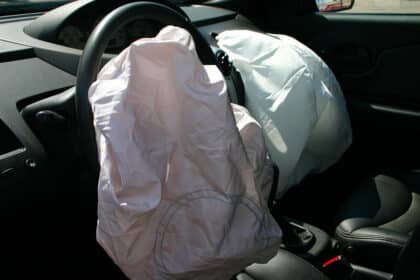
The Nystagmus Test Source: Oregon DoT
If you are curious about how a police officer can tell if you’ve had too much to drink and exactly what you can expect from the different types of field sobriety tests, look no further. We’ll explain each test and how it works. Remember to always cooperate with police, follow their instructions, and do not begin the test until they instruct you to do so.
You will be required to give consent to complete the test, so be aware you cannot be forced to participate. However, if you opt out of the test, a breathalyzer test will be administered, or you’ll be taken into the police station.
- Nystagmus. This is a test that monitors what your eyes are doing. If your eyes can’t smoothly follow the officer’s finger or pencil as he or she moves it about six inches in front of your nose, you’ll fail and be considered too impaired to drive.
- Standing on One Leg. This test is designed to monitor your ability to balance, usually while completing another task. The officer may ask you to stand on one foot, place your hands by your side, and count by thousands (one one thousand, two one thousand….). The officer will look for swaying or loss of balance, not following directions properly, or losing count, all signs of intoxication.
- Walk and Turn. This test also measures balance and ability to follow directions and count. The officer will ask you to walk a certain number of steps away, turn around, and walk the same number of steps back, maintaining heel-to-toe steps. If the officer notices you sway, lose balance, lose count, or put space between your heel and foot, you’ll fail this test.
- Finger to Nose. This test measures balance, and requires you to stand straight with your feet together, close your eyes, extend your arms, and then touch your finger to your nose. The officer will consider any loss of balance, missing your nose, or muscle tremors a fail.
- The Rhomberg Balance Test. This test requires you to stand straight, tilt your head back, close your eyes, and estimate how long it takes for 30 seconds to pass. The officer will look for loss of balance, muscle spasms, or incorrect perception of time, which alcohol can slow down.

The finger to nose field sobriety test
These tests are nothing to worry about if you’re sober. Any person sober and capable of driving will be able to complete these tests and be on their way. For more information, check out duianswer.com.

The News Wheel is a digital auto magazine providing readers with a fresh perspective on the latest car news. We’re located in the heart of America (Dayton, Ohio) and our goal is to deliver an entertaining and informative perspective on what’s trending in the automotive world. See more articles from The News Wheel.









